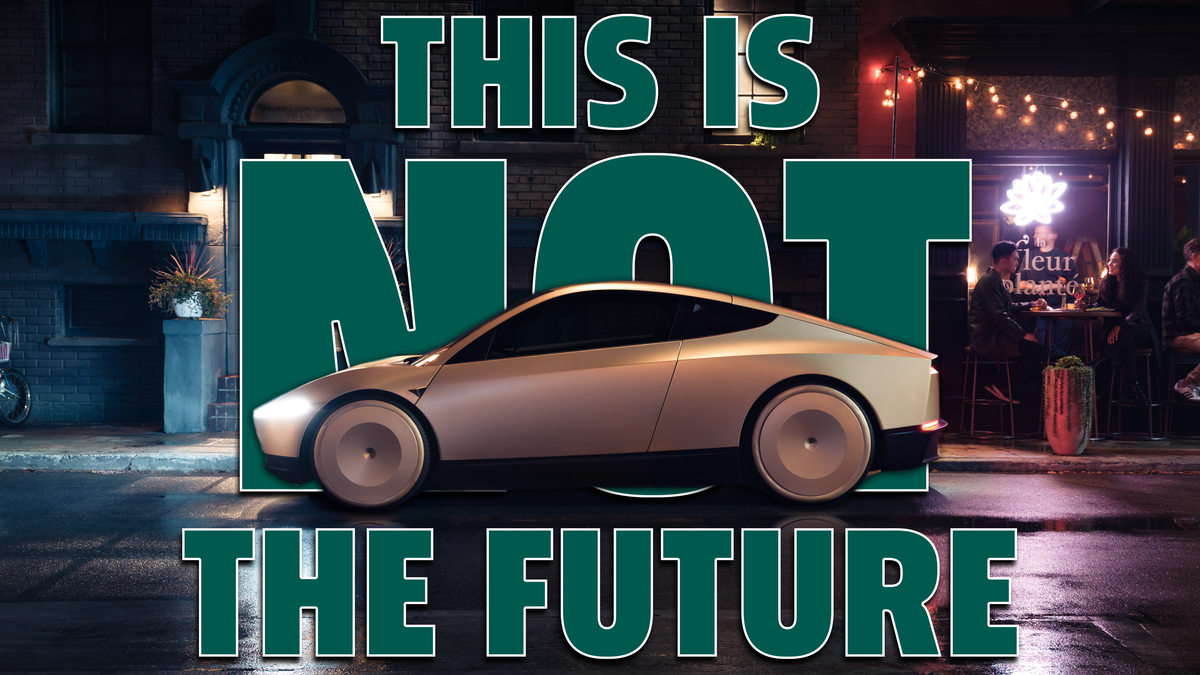Investors are all abuzz right now on the news that Donald Trump will make it easier to get autonomous cars on the roads. Tesla stock shot up on the news, and Wall Street analysts justified the jump by saying much of the company’s value is based on its AI efforts. Here’s the issue: The analysts are wrong, and autonomous cars are not the market godsend they’re expecting.
CNBC spoke with analyst Tom Narayan of RBC Capital yesterday, to ask whether Trump’s promise to deregulate autonomous vehicles would outweigh his promise to end the federal EV tax credit. Narayan had previously written on the topic when raising RBC’s target price for Tesla, saying that autonomy accounts for a full 77 percent of the company’s valuation. He told CNBC that AV deregulation would far outweigh the tax credit in importance, as it would allow Tesla to create a vehicle “without wheels and pedals” that “cuts down a lot of costs” and can “gobble up the market.” The problem Narayan doesn’t see, however, is that cutting wheels and pedals won’t save that much cost — and that the self-driving market is far smaller than most think.
First off, the cost savings from removing wheels and pedals from cars would likely be nearly negligible in comparison to the cost of an autonomous vehicle. Sure, brake master cylinders and steering columns are complicated, but AVs still need to brake and steer — the complex systems remain in place, with only the human controls removed to save money. According to Tesla’s parts fiche, the entire upper steering column and wheel assembly for a Model S costs just $2,853.05 at retail pricing. Nothing to sneeze at, sure, but not even enough to outweigh the $2,400 car computer. Controls aren’t the big money sinks in automotive manufacturing.
Then there’s the AV market, which is more dire than analysts think. The entire global passenger car market sat at about $3.1 trillion in 2022. Studies have shown that 86 percent of U.S. drivers want to be able to take over an autonomous car in the event of an emergency, meaning that every AV manufacturer is only playing for a slice of a $434 billion pie if those numbers hold up globally. Add in Tesla’s master plan to allow Robotaxi owners to share their vehicles, which could allow a single vehicle sale to cover multiple interested buyers, and the company’s piece of that already tiny market could end up infinitesimal. For context, no automaker currently holds more than an 11 percent market share globally — Tesla could well be playing for mere tens of billions here. That doesn’t justify 77 percent of a trillion-plus-dollar market cap.
Obviously, AV sentiment varies by location, and applying U.S. attitudes towards autonomy towards the entire global market is an oversimplification for this example. Chinese car buyers are more open to autonomy than we are over here, while folks in India hew closer to our American opinions. But even if that total AV market doubles or triples in size, it’s not enough to justify the sort of investment we’re seeing. Autonomous vehicles are not a source of infinite income with minimal cost waiting just around the corner, locked away by federal regulation — they’re a niche interest that most people won’t buy.
Update 11/19/2024 3:02 PM: Fixed math errors resulting from punching a typo into my calculator. The theoretical size of the AV market is $434 billion, not million, meaning an 11 percent market share would net out to about $4.8 billion — still well short of 77 percent of Tesla’s $1.08 trillion market cap, which comes out to $831.6 billion, and that’s based on a future in which Tesla achieves Toyota-like dominance over the AV category. While the passenger car market is growing at 16.2 percent annually, it would still take years for the entire market size to match that share of Tesla’s market cap, let alone for the company’s own market share to match that amount. Plus, without AVs on the roads and on sale, it’s tough to say what growth may look like for that market.


